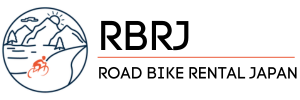
Guía ciclista y ruta de Kioto a Uji y Otsu
Atraviese el corazón de Kioto antes de llegar a Uji y Otsu para experimentar un extraordinario pasaje de ciclismo y paisajes. Las carreteras en las laderas por encima del río son dignas de ver.
Índice
- Introducción >
- Ruta >
- Kioto Corazón >
- Río Kamo y a través de Fushimi. >
- To Uji >
- Río Uji, río Seta y Ruta 3 >.
- Nango y Otsu >
- Sanjo dori y el regreso por Kioto >
- Reflexiones finales >
Introducción
Se trata de una ruta ciclista de 70 km que comienza en KiotoLa ruta 3 se dirige hacia el noreste por la ruta 3 hasta Otsu y luego regresa a Kioto para terminar.
El recorrido tiene algunos momentos excelentes y, aunque son 70 km, no resulta demasiado extenuante, sobre todo porque no hay subidas realmente empinadas.
Aunque el recorrido ofrece unos paisajes increíbles, sobre todo a lo largo de la espectacular ruta 3 que atraviesa las montañas de Uji, hay que lidiar con algo de tráfico al principio y al final del recorrido, especialmente en las horas punta.
Ruta
Distancia70 km (según la ubicación de la antigua tienda)
Ganancia de elevación: 903m
Corazón de Kioto
El recorrido comienza en Shijo dori y se dirige hacia el este a través del centro de Kioto, pasando por la estación Hankyu Karasuma y el corazón de la ciudad.
La carretera está muy transitada -especialmente cerca del centro, por supuesto-, pero en cierto modo me parece una parte interesante del recorrido.

Algunos de los edificios que atraviesan la ciudad son impresionantes y hay mucha energía en el CBD y en los principales distritos comerciales de Kioto.
El centro tiene una cantidad inusualmente grande de semáforos, lo que ralentiza la marcha, pero ir en bicicleta es bastante rápido, ya que puedes sortear los autobuses que se detienen, mientras que los coches son demasiado grandes para apretujarse y tienen que esperar.

Sigue conduciendo hasta llegar al Kamo, donde giraremos a la derecha y nos dirigiremos hacia el sur.
río Kamo y a través de Fushimi
Cuando llegues al río Kamo, debes cruzar el puente para que cuando bajes al carril bici, estés en la orilla este del río.
También se puede bajar por la orilla oeste del río, pero en algún momento habrá que cruzarlo para dirigirse al sureste, hacia Fushimi.
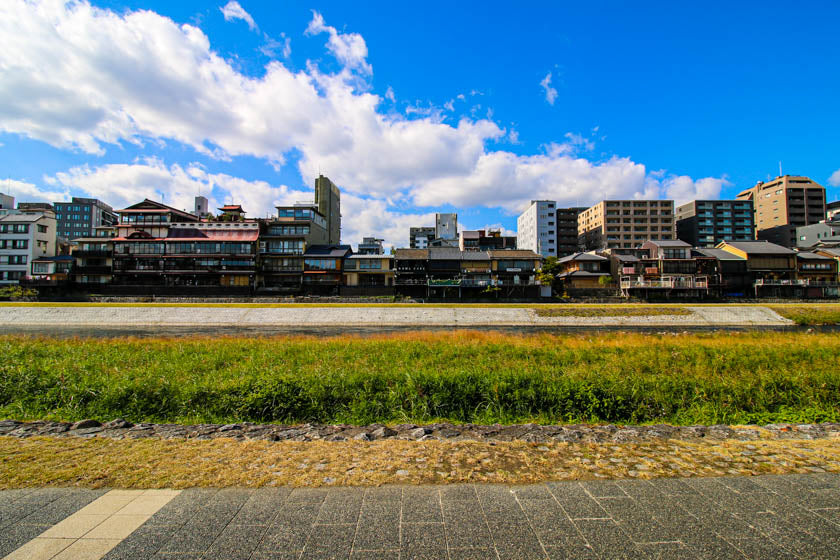
Continúe hacia el sur por el río Kamo, que siempre es un paseo encantador. Tras recorrer unos 500 metros hacia el sur, el río se vuelve bastante tranquilo y la arquitectura japonesa de los puentes es siempre un espectáculo agradable.
A través de Fushimi
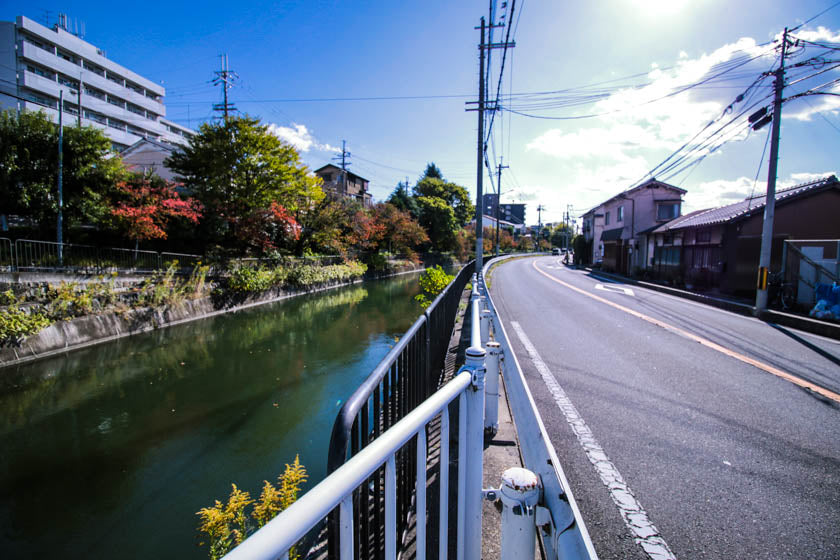
Esta carretera se llama Shidan Kaido y hay un poco de tráfico, ya que muchos coches y camiones van o vienen de la autopista Meishin, que está un poco más al sur.
Pase por debajo de la autopista y diríjase a la izquierda y luego a la derecha para llegar a la ruta 35.
El tráfico se alivia y la ruta 35 se convierte en una carretera encantadora con antiguas fruterías, almacenes de ramos generales, casas y un sentimiento de comunidad que ha perdurado en el tiempo.
A la izquierda en Sumizome dori
Después hay que girar a la izquierda, pasar la estación de Suizome y empezar a subir una pequeña cuesta bordeada de preciosas casas japonesas, parques y un cruce de vías de tren hasta llegar a la cima, desde donde se divisa una gran vista de la cadena montañosa que se extiende hacia el sur, en dirección a Uji.
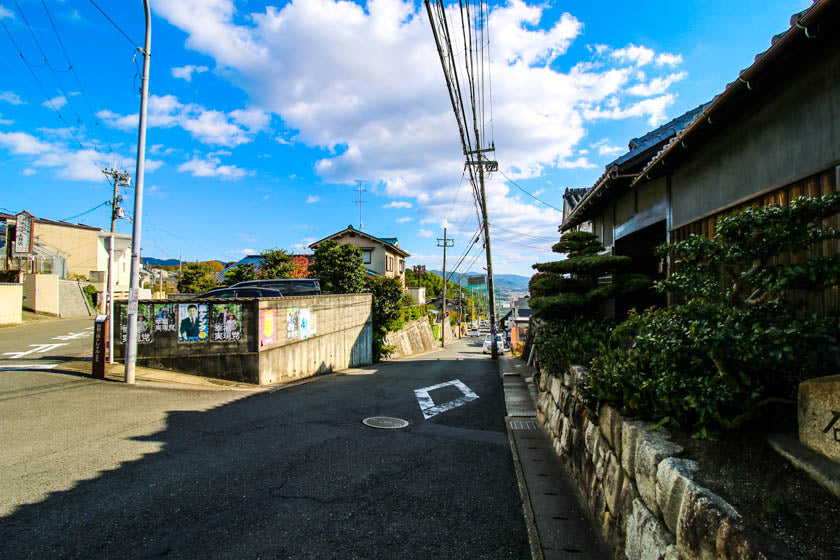
Lánzate a la bajada y ten cuidado, ya que es bastante empinada en algunas partes, así que pisa el freno y concéntrate en el sinuoso descenso a través de los suburbios hasta el final.
A Uji
Cuando llegue al pie de la colina, gire a la izquierda y entre en la ruta 7.
Sigue esta carretera hasta Uji y también hay bastante tráfico y algunos tramos estrechos, así que mantente a la izquierda y sigue pedaleando hasta que las montañas de la izquierda se vayan acercando poco a poco a medida que te acercas a la naturaleza y te alejas del alboroto de la ciudad.
Hay un momento precioso cuando se llega a la cima de una pendiente y se obtiene una bonita vista de Uji abajo.
Continúe colina abajo y cruce el hermoso puente de Uji, que es el principal del centro de la ciudad. El puente puede ser un bonito lugar para detenerse a admirar el paisaje del río y sentir el aura que parece irradiar Uji.
A través de la Puerta de Tori
Después de pasar por el puente, cruce y tome la primera a la izquierda que le llevará a la bifurcación con la gran puerta tori a la derecha, y el Byodoin Omotesando a la izquierda (las calles de acceso a los santuarios en Japón a veces se llaman Omotesando, que se traduce como Omote (frente) y Tando (acceso).

Nuestra ruta no incluye el santuario de Byodoin, pero si no lo ha visitado y dispone de tiempo, es un santuario venerado que merece una visita.
La moneda de 10 yenes tiene el santuario de Byodoin, lo que es un buen indicador de su importancia cultural para Japón.
Tanto si se visita el santuario como si no, tomamos el camino de la derecha bajo la puerta tori y subimos una pendiente antes de girar a la izquierda por la ruta 3.
Río Uji, río Seta y Ruta 3
Una vez que se entra en Uji y se atraviesan las enormes puertas tori, se siente que el viaje empieza a cambiar al pasar por delante de la increíble arquitectura japonesa, se siente la magia de Uji y se inicia el viaje por la ruta 3 río arriba y hacia las montañas.
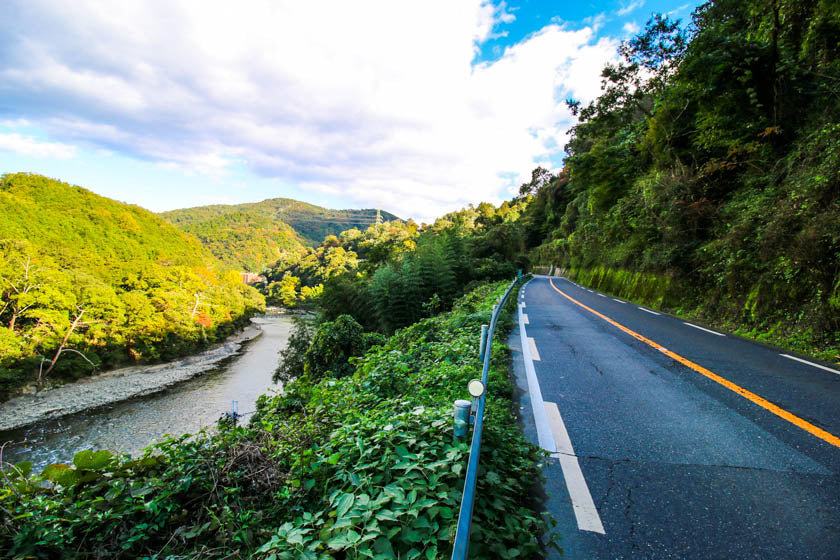
La Ruta 3 a lo largo del río Uji y Seta es uno de los regalos de Japón para el ciclismo.
La carretera asciende lentamente por la ladera de la montaña hasta llegar a serpenteantes carreteras encaramadas sobre el río.
Los ríos son una presencia constante que se abren paso a través del espeso bosque y el valle hasta unirse con el río Yodo, el mayor de los que atraviesan Osaka.
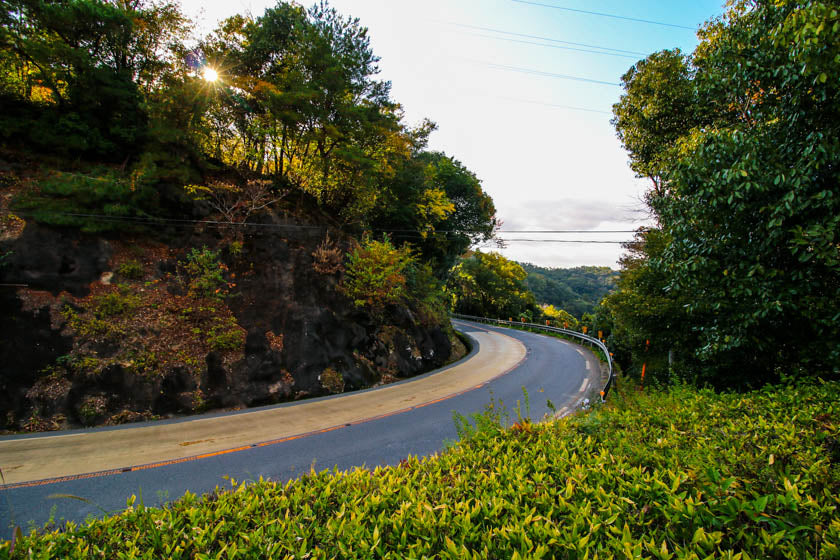
El recorrido sigue más o menos el río, pero asegúrese de mantenerse a la izquierda en la ruta 3 justo antes de la presa, ya que hay un giro a la derecha que confunde a algunos ciclistas.
Sigue avanzando hasta llegar al puente Yoimachi, donde deberás girar a la izquierda y cruzar el puente.
Opción Nara
Girar a la derecha aquí y dirigirse hacia el sur por la 62 es una forma de incluir Nara en este bucle bajando hasta Nara y volviendo a unirse a esta ruta aquí.
Si decide realizar el bucle completo con Nara incluido, el recorrido se convierte en una epopeya de 130 km no apta para pusilánimes.
Los paisajes y el trayecto hacia Nara son impresionantes, junto con algunas subidas intensas que sin duda pondrán a prueba su resistencia y su fuerza.
Para los interesados, la ruta es la siguiente.
Ruta más larga con Nara
Detalles
Distancia: 139km
Elevación Desnivel: 2.006 m
Ver en Strava >
Obras viales
Debido al paisaje, algunas partes de la ruta 3 se cierran a veces después de fuertes lluvias, tifones o simplemente por mantenimiento general para retirar árboles que empiezan a colgar sobre la carretera u otros escombros.
Uno de los carriles también podría cerrarse parcialmente y los trabajadores de la carretera dejarían pasar a cada sentido en breves ráfagas.
Dicho esto, probablemente sea mejor evitar la ruta después de condiciones meteorológicas adversas.
Cruzar el puente Yoimachi
Después de cruzar el puente, el viaje continúa con algunas curvas deliciosas, un hermoso color verde en el río, bosques profundos y llamativos puentes a lo largo del río Seta.
El puente de Omine -el rojizo-, que se pasa en primer lugar, es probablemente el mejor de los puentes, pero todos ellos ofrecen hermosas vistas a medida que se avanza por la carretera.
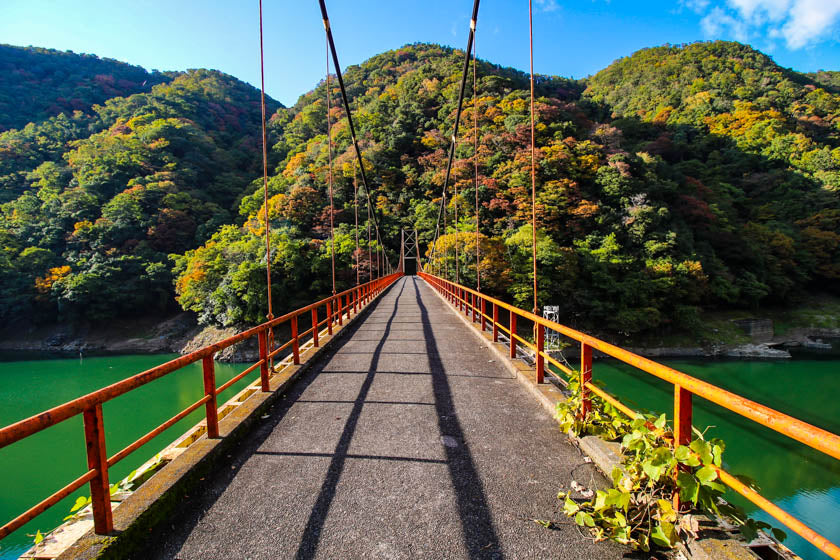
Bonito túnel
Siga adelante y pase por el túnel corto (¡en realidad es un túnel agradable de atravesar!) y pase por el puente Kisenyama (el blanco cerrado por una verja) que también es bonito pero está cerrado al público.

Cruzar el puente de Yuzuka
El puente que hay que vigilar de cerca es el de Yuzuka, que es un puente para el tráfico con dos carriles y señales para Otsu.
Cuando llegue a él, cruce este puente y diríjase a la derecha siguiendo las señales que apuntan a Otsu.
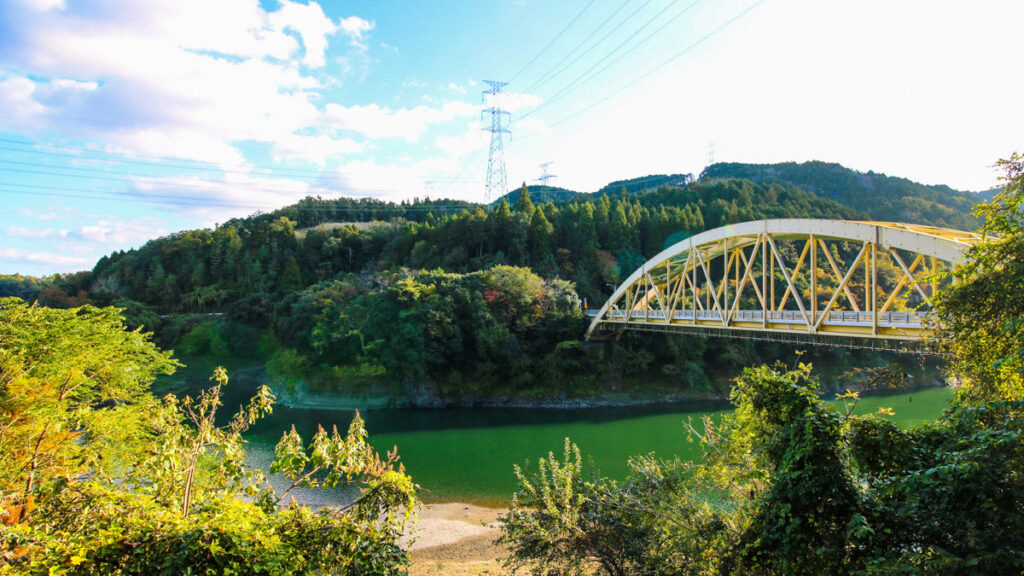
Continúe pedaleando por la ruta 3, siguiendo el río y el excelente paisaje hacia el este y, finalmente, pase por un pequeño pueblo tradicional a la izquierda con un santuario en lo alto de la colina.
Ishiyamasotohatacho
La ciudad se llama Ishiyamasotohatacho y el santuario de la colina se llama Jokoji.
Si se dispone de tiempo, merece la pena adentrarse rápidamente en la ciudad y empaparse del ambiente de las hermosas casas tradicionales encaramadas sobre el río.
También merece la pena visitar el santuario de la colina, al que puede acercarse bastante en bicicleta antes de bajarse y subir el resto del camino por las escaleras.
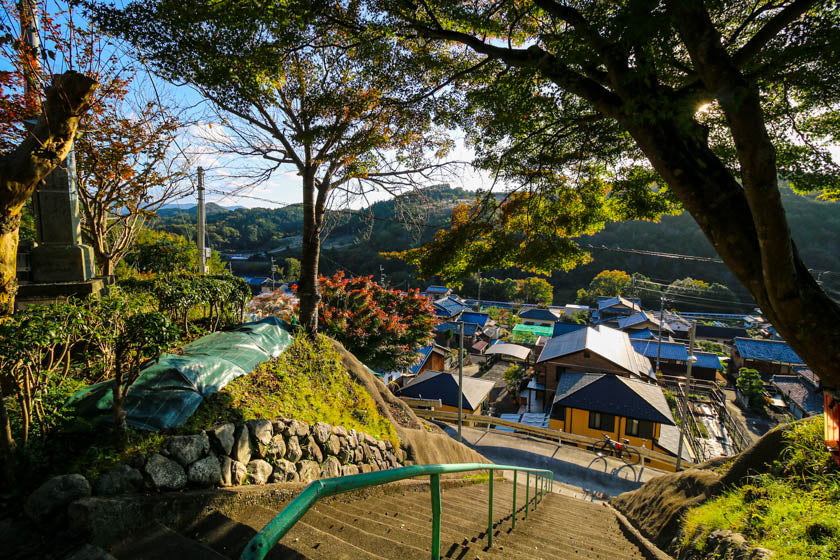
El santuario es bastante alto, por lo que ofrece una hermosa vista de la ciudad y de los valles y montañas a lo lejos.
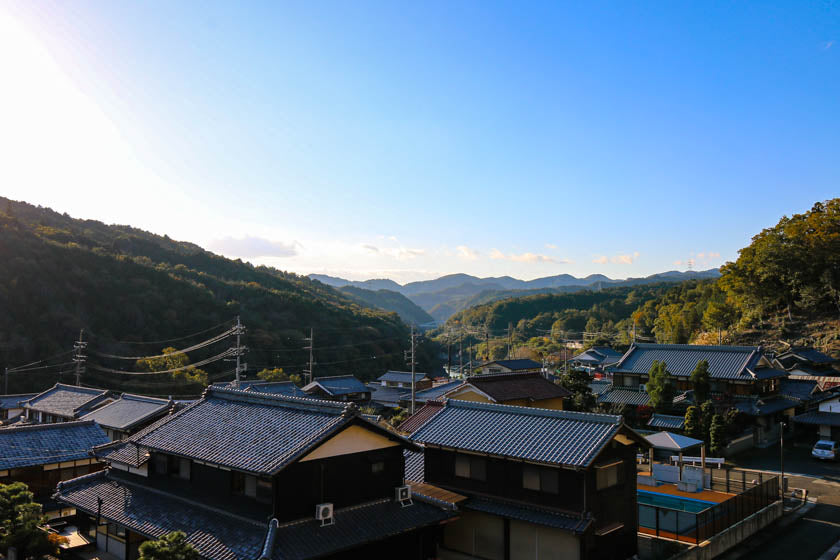
Una vez que haya disfrutado del paisaje, baje de nuevo a la ruta y asegúrese de echar un vistazo a la ciudad al otro lado del río (a su derecha) mientras pedalea.
Como la carretera por la que se va es un poco más alta que la del otro lado, se obtiene una vista preciosa de Oshiyodo, que es la ciudad enclavada en las montañas al otro lado del río.
Nango y Otsu
Nuestra ruta nos lleva por la ciudad ribereña de Nango y la parte ribereña de Otsu antes de girar a la izquierda y dirigirnos hacia el oeste, alejándonos del lago Biwa.
Biwa es el mayor lago de agua dulce de Japón y el río Seta -que acabamos de remontar- es su mayor desembocadura.
En este recorrido no vemos mucho el lago, pero también es un popular destino ciclista con algunos lugares increíbles.
Ruta 1 por Otsu
Puede tomar la 104, girar rápidamente a la derecha en la 782 y luego a la izquierda en la número 1, que es el tramo final del recorrido.
La Ruta 1 es una carretera principal y, según la hora del día, puede haber bastante tráfico.
Hace poco pasé por aquí a las 16:00 - 17:00 y había mucho tráfico en hora punta, que aún así estaba bien, pero yo recomendaría evitarlo.
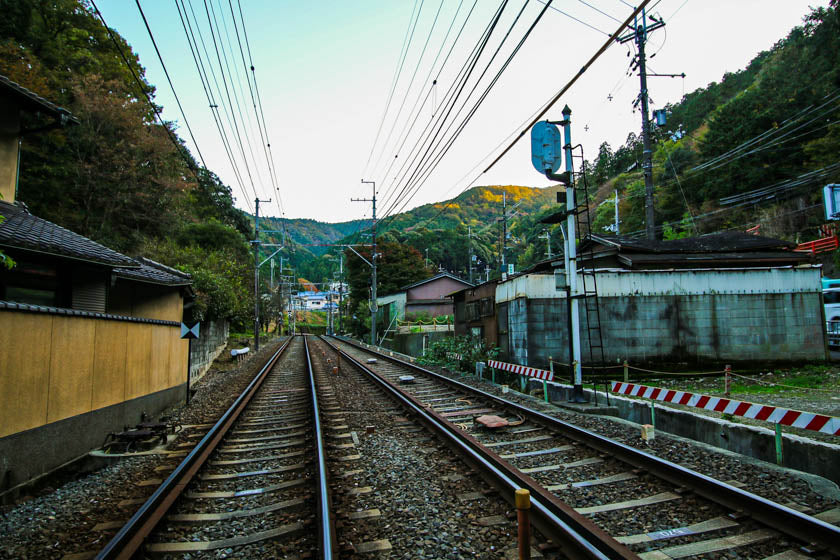
A medida que atravesamos el centro de Otsu no se puede ver mucho del lago a la izquierda, pero sí las montañas a lo lejos, lo que es una vista impresionante.
Monjes maratonianos
La mayor de estas montañas es el monte Hiei, de 848 m de altitud.
Si se siente cansado, piense un momento en los monjes maratonianos del monte Hiei, que completaron el reto de los 1.000 días caminando entre 30 y 84 km diarios durante periodos de 100 o 200 días consecutivos, una distancia total equivalente a dar la vuelta a la Tierra.
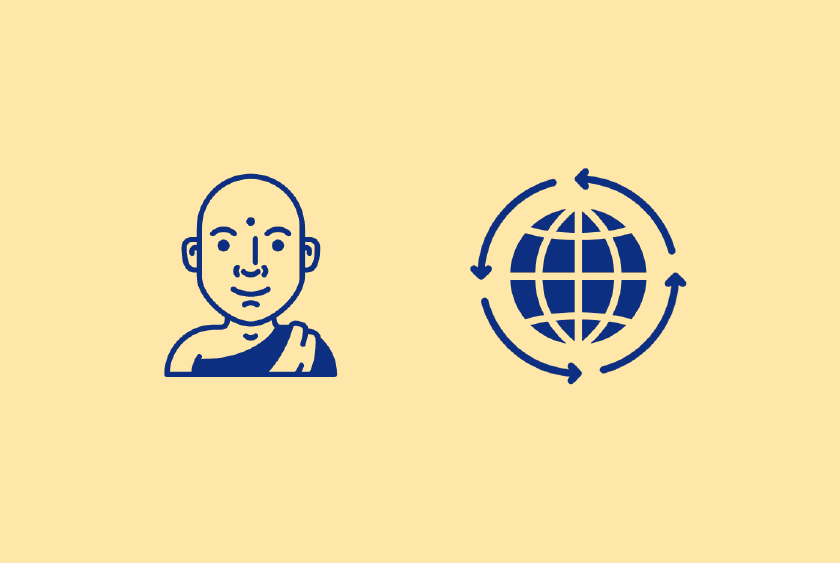
Una vez adquirida cierta perspectiva monacal, siga girando las ruedas y diríjase hacia el oeste, pasando por la estación de Otsu y volviendo a las montañas.
La Ruta 1 comienza subiendo una pendiente que puede resultar agotadora, pero después de pensar un poco más en los monjes del maratón, es de esperar que encuentre la energía necesaria para subir la cuesta y bajar por el otro lado.
Bypass grande
Siga por la ruta 1 hasta llegar a un gran cruce de tráfico (circunvalación) con carreteras que van en varias direcciones. Queremos llegar al Sanjo dori, en el lado oeste de la carretera de circunvalación, y hay varias formas de hacerlo.
Sin embargo, hay que tener cuidado al girar a la derecha y pasar por debajo de la autopista Meishin, ya que si no se tiene confianza en la conducción puede ser un poco peligroso.
Los dos carriles de la izquierda van ambos a la izquierda (líneas rosas abajo), por lo que en realidad hay que estar en el tercer carril para poder girar a la derecha e ir con el tráfico.
Esto significa cruzar dos carriles de tráfico y los coches van relativamente rápido aquí por lo que puede ser difícil de superar en la bicicleta.
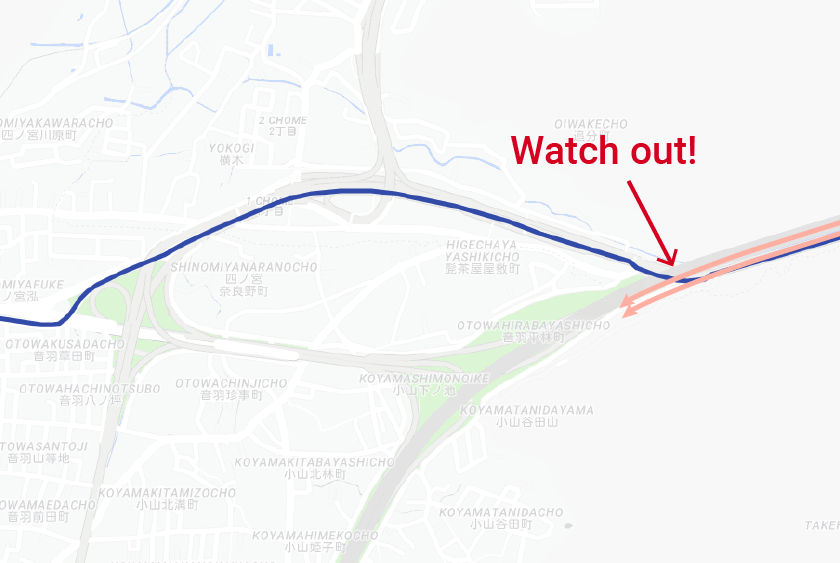
Sanjo dori y regreso por Kioto
Siga pedaleando por Sanjo dori y llegará a la última colina de la subida antes de rodar cuesta abajo y atravesar la parte norte de la hermosa zona de Higashiyama, en Kioto.
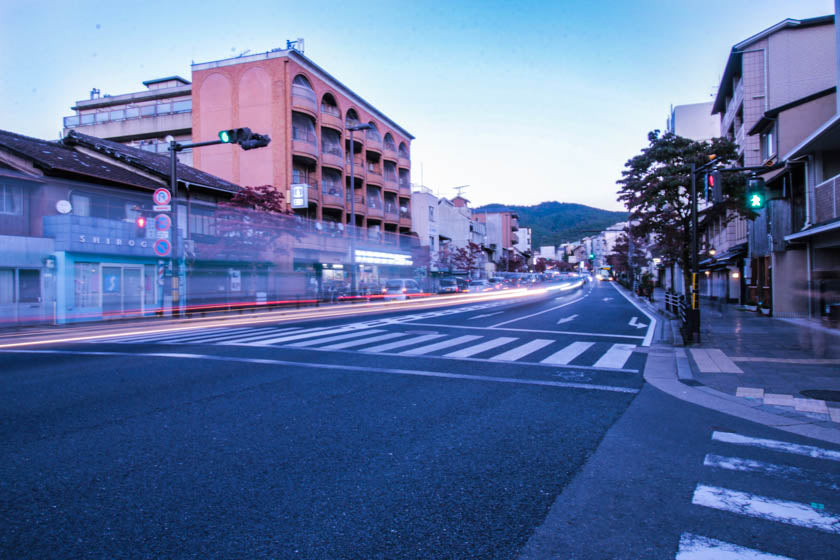
Por último, gire a la izquierda y diríjase hacia el sur por el río Kamo o por una de las calles laterales antes de girar a la derecha por Shijo dori y hacer el último tramo hacia el oeste, hacia la meta.
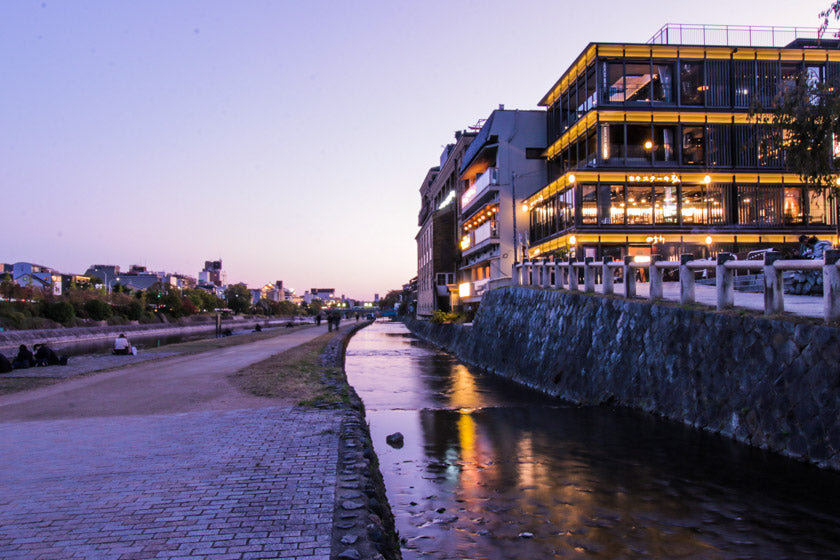
Reflexiones finales
Es un viaje precioso con muchos tramos magníficos en bicicleta, pero lo más destacado es el recorrido de la ruta 3 a lo largo de los ríos Uji y Seta.
Este tramo es increíble y, para cualquiera que vaya en bicicleta por Kioto, Nara y la zona de Kansai, recomendamos encarecidamente que lo recorra si puede.
Hay otros momentos mágicos en el recorrido que lo convierten en un viaje muy agradable. Sin embargo, el tráfico en algunos tramos no es el mejor, así que asegúrese de evitar las horas punta si puede.
¡Feliz pedaleo!
